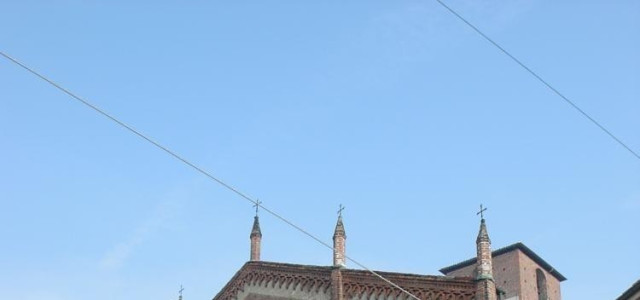Mortara
Mortara, in Lomellina, is located along the route of Via Francigena coming from Robbio and Nicorvo, which arrives in the city along Corso Garibaldi up to Abbey of Sant'Albino, important historical stop on the way. According to tradition, the city was founded around the seventh century B.C. from Celtic populations, however the only historically certain element on ancient vicissitudes of the place, is given by the milestone currently preserved at the side entrance of Baslica di S. Lorenzo. The building, in Lombard Gothic style (1375-1380), overlooks Piazza Monsignor Dughera, behind the town hall, and preserves paintings and sculptures from the fifteenth, sixteenth and seventeenth centuries. to visit also the 16th century Church of Santa Croce, the mother church of the mortariensis, with annexed Lateran Palace. Among the places of culture, Vittorio Emanuele II Municipal Theater, built in 1846 by the architect Celestino Braccio, Palazzo Cambieri and Francesco Pezza Library, historical background of the Municipality of Mortara, with large areas where it is possible to carry out the most diverse activities . The last Sunday of September takes place traditional "Goose Festival", with events that take place throughout the second half of the month and with a historical parade disputed by the seven historical districts.


